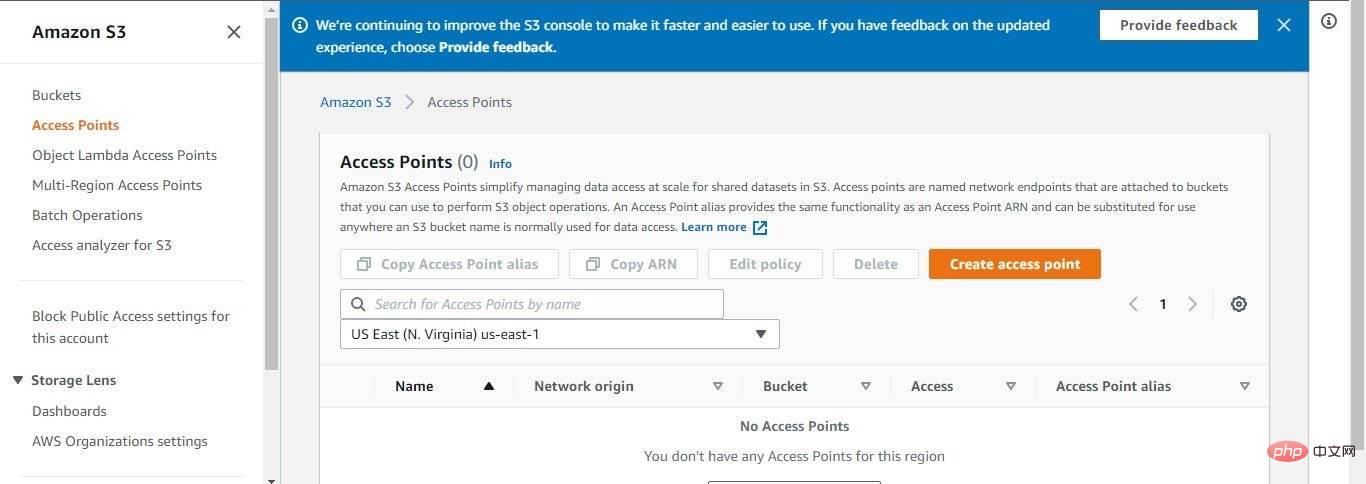For empty file names in Go file uploads, the following steps need to be taken: Check whether the FormFile object exists, and return an error if it is empty. Create a custom parser to check whether the uploaded file name is empty, and return an error if it is empty.

Guidelines for handling empty file names in Golang file uploads
When processing file uploads in the Go language, you may encounter Scenario where user submits an empty file name. This can lead to various errors that affect the stability of the application and the user experience. To solve this problem, here is a guide on how to safely and efficiently handle empty filenames in Golang file uploads.
Checking the FormFile object
Always check whether the FormFile object exists before processing an uploaded file. You can use the IsZero method to check if the object is empty:
file, header, err := request.FormFile("file")
if file.IsZero() {
return errors.New("Empty file received")
}If the FormFile object is empty, an error message is returned, such as "Empty file received".
Custom parsers
In some cases you may not be able to use the FormFile object. In this case you can create a custom parser. The parser checks the uploaded file and returns a multipart.FileHeader object or error:
func parseFile(r *http.Request, key string) (*multipart.FileHeader, error) {
if r.MultipartForm == nil {
return nil, errors.New("No multipart form found")
}
file, header, err := r.MultipartForm.File[key]
if err != nil {
return nil, err
}
if header.Filename == "" {
return nil, errors.New("Empty file received")
}
return file, nil
}The custom parser also checks if the name of the uploaded file is empty and returns an error message , such as "Empty file received".
Practical case
The following code example shows how to apply the above technology to a real scenario:
func handleFileUpload(w http.ResponseWriter, r *http.Request) {
file, header, err := r.FormFile("file")
if err != nil {
http.Error(w, "Error getting file: "+err.Error(), http.StatusInternalServerError)
return
}
if file.IsZero() {
http.Error(w, "Empty file received", http.StatusBadRequest)
return
}
// 处理上传文件
// ...
}Conclusion
By following these guidelines, you can effectively handle empty file names in Golang file uploads, ensuring that your applications function properly in a variety of situations.
The above is the detailed content of How to handle empty file names in Golang file upload?. For more information, please follow other related articles on the PHP Chinese website!
 将文件上传到 Amazon S3 时修复网络错误的 3 种方法Apr 14, 2023 pm 02:22 PM
将文件上传到 Amazon S3 时修复网络错误的 3 种方法Apr 14, 2023 pm 02:22 PMAmazon Simple Storage Service,简称Amazon S3,是一种使用 Web 界面提供存储对象的存储服务。Amazon S3 存储对象可以存储不同类型和大小的数据,从应用程序到数据存档、备份、云存储、灾难恢复等等。该服务具有可扩展性,用户只需为存储空间付费。Amazon S3 有四个基于可用性、性能率和持久性的存储类别。这些类包括 Amazon S3 Standard、Amazon S3 Standard Infrequent Access、Amazon S3 One
 Vue 中如何实现文件上传功能?Jun 25, 2023 pm 01:38 PM
Vue 中如何实现文件上传功能?Jun 25, 2023 pm 01:38 PMVue作为目前前端开发最流行的框架之一,其实现文件上传功能的方式也十分简单优雅。本文将为大家介绍在Vue中如何实现文件上传功能。HTML部分在HTML文件中添加如下代码,创建上传表单:<template><div><formref="uploadForm"enc
 node项目中如何使用express来处理文件的上传Mar 28, 2023 pm 07:28 PM
node项目中如何使用express来处理文件的上传Mar 28, 2023 pm 07:28 PM怎么处理文件上传?下面本篇文章给大家介绍一下node项目中如何使用express来处理文件的上传,希望对大家有所帮助!
 浅析vue怎么实现文件切片上传Mar 24, 2023 pm 07:40 PM
浅析vue怎么实现文件切片上传Mar 24, 2023 pm 07:40 PM在实际开发项目过程中有时候需要上传比较大的文件,然后呢,上传的时候相对来说就会慢一些,so,后台可能会要求前端进行文件切片上传,很简单哈,就是把比如说1个G的文件流切割成若干个小的文件流,然后分别请求接口传递这个小的文件流。
 CakePHP如何处理文件上传?Jun 04, 2023 pm 07:21 PM
CakePHP如何处理文件上传?Jun 04, 2023 pm 07:21 PMCakePHP是一个开源的Web应用程序框架,它基于PHP语言构建,可以简化Web应用程序的开发过程。在CakePHP中,处理文件上传是一个常见的需求,无论是上传头像、图片还是文档,都需要在程序中实现相应的功能。本文将介绍CakePHP中如何处理文件上传的方法和一些注意事项。在Controller中处理上传文件在CakePHP中,上传文件的处理通常在Cont
 如何解决PHP语言开发中常见的文件上传漏洞?Jun 10, 2023 am 11:10 AM
如何解决PHP语言开发中常见的文件上传漏洞?Jun 10, 2023 am 11:10 AM在Web应用程序的开发中,文件上传功能已经成为了基本的需求。这个功能允许用户向服务器上传自己的文件,然后在服务器上进行存储或处理。然而,这个功能也使得开发者更需要注意一个安全漏洞:文件上传漏洞。攻击者可以通过上传恶意文件来攻击服务器,从而导致服务器遭受不同程度的破坏。PHP语言作为广泛应用于Web开发中的语言之一,文件上传漏洞也是常见的安全问题之一。本文将介
 Django框架中的文件上传技巧Jun 18, 2023 am 08:24 AM
Django框架中的文件上传技巧Jun 18, 2023 am 08:24 AM近年来,Web应用程序逐渐流行,而其中许多应用程序都需要文件上传功能。在Django框架中,实现上传文件功能并不困难,但是在实际开发中,我们还需要处理上传的文件,其他操作包括更改文件名、限制文件大小等问题。本文将分享一些Django框架中的文件上传技巧。一、配置文件上传项在Django项目中,要配置文件上传需要在settings.py文件中进
 PHP文件上传处理逻辑大梳理(全面分析)Nov 10, 2022 pm 04:32 PM
PHP文件上传处理逻辑大梳理(全面分析)Nov 10, 2022 pm 04:32 PM本文给大家介绍有关PHP文件上传的逻辑实现分析,想必这种实现在项目中都比较常见的,大家一起来看看吧~希望对需要的朋友有所帮助~


Hot AI Tools

Undresser.AI Undress
AI-powered app for creating realistic nude photos

AI Clothes Remover
Online AI tool for removing clothes from photos.

Undress AI Tool
Undress images for free

Clothoff.io
AI clothes remover

AI Hentai Generator
Generate AI Hentai for free.

Hot Article

Hot Tools

SublimeText3 Mac version
God-level code editing software (SublimeText3)

Dreamweaver Mac version
Visual web development tools

SublimeText3 Chinese version
Chinese version, very easy to use

VSCode Windows 64-bit Download
A free and powerful IDE editor launched by Microsoft

SublimeText3 Linux new version
SublimeText3 Linux latest version






